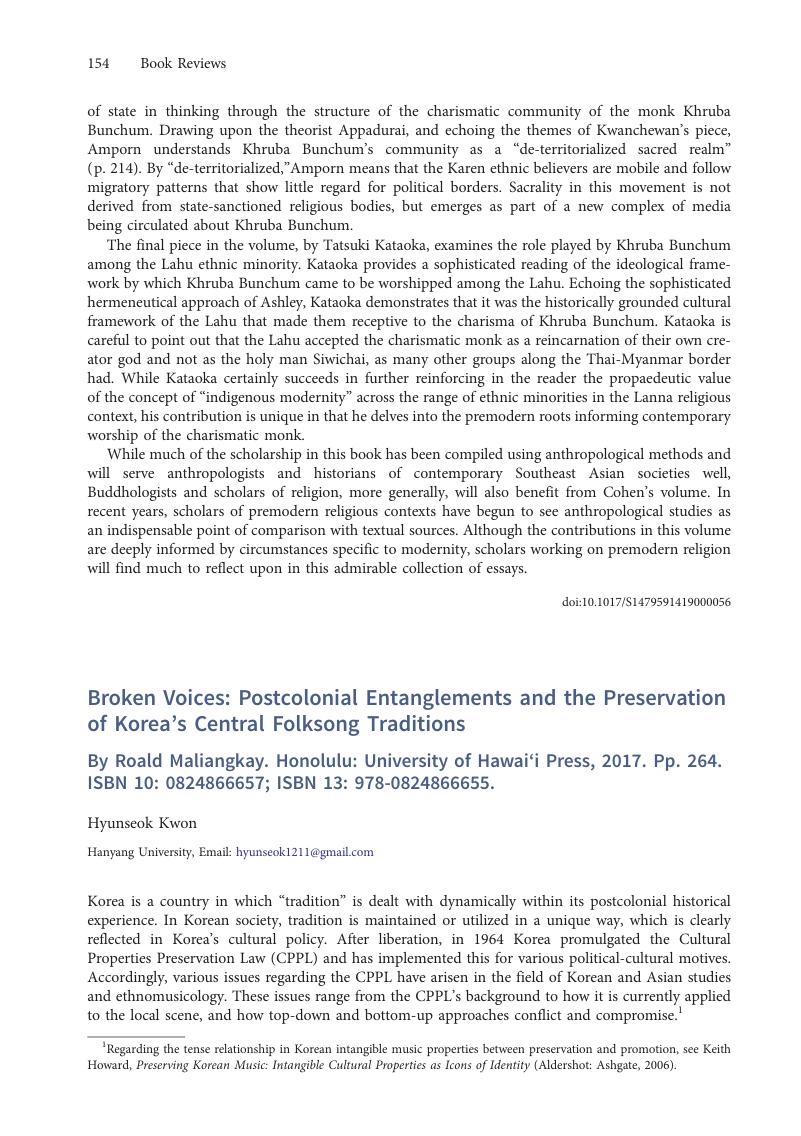No CrossRef data available.
Published online by Cambridge University Press: 23 July 2019

1 Regarding the tense relationship in Korean intangible music properties between preservation and promotion, see Howard, Keith, Preserving Korean Music: Intangible Cultural Properties as Icons of Identity (Aldershot: Ashgate, 2006)Google Scholar.
2 Regarding the case of mask drama of t'ongyŏng, a national intangible property, see the article by Hyunseok, Kwon, “A Case Study on the Perception of the Wŏnhyŏng (Original Form) of Local Music in Korea,” Acta Koreana 12:1 (2009), pp. 53–71CrossRefGoogle Scholar.
3 In 2016, the Act on Conservation and Promotion of Intangible Properties had newly been enacted, partly to overcome the inflexibility of the CPPL's previous rule.